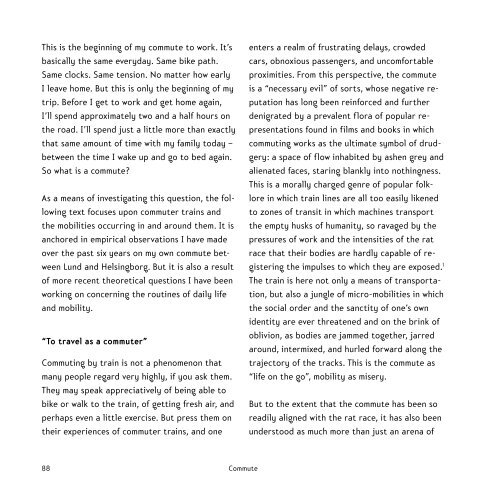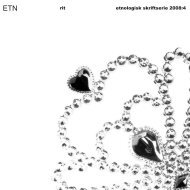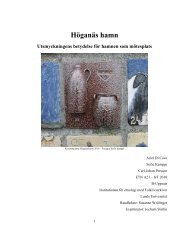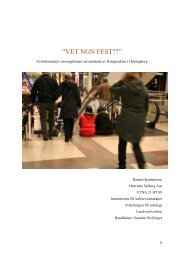Extern fulltext (Nytt fönster) - Institutionen för konst- och ...
Extern fulltext (Nytt fönster) - Institutionen för konst- och ...
Extern fulltext (Nytt fönster) - Institutionen för konst- och ...
Create successful ePaper yourself
Turn your PDF publications into a flip-book with our unique Google optimized e-Paper software.
This is the beginning of my commute to work. It’s<br />
basically the same everyday. Same bike path.<br />
Same clocks. Same tension. No matter how early<br />
I leave home. But this is only the beginning of my<br />
trip. Before I get to work and get home again,<br />
I’ll spend approximately two and a half hours on<br />
the road. I’ll spend just a little more than exactly<br />
that same amount of time with my family today –<br />
between the time I wake up and go to bed again.<br />
So what is a commute?<br />
As a means of investigating this question, the following<br />
text focuses upon commuter trains and<br />
the mobilities occurring in and around them. It is<br />
anchored in empirical observations I have made<br />
over the past six years on my own commute between<br />
Lund and Helsingborg. But it is also a result<br />
of more recent theoretical questions I have been<br />
working on concerning the routines of daily life<br />
and mobility.<br />
“To travel as a commuter”<br />
Commuting by train is not a phenomenon that<br />
many people regard very highly, if you ask them.<br />
They may speak appreciatively of being able to<br />
bike or walk to the train, of getting fresh air, and<br />
perhaps even a little exercise. But press them on<br />
their experiences of commuter trains, and one<br />
88 Commute<br />
enters a realm of frustrating delays, crowded<br />
cars, obnoxious passengers, and uncomfortable<br />
proximities. From this perspective, the commute<br />
is a “necessary evil” of sorts, whose negative reputation<br />
has long been reinforced and further<br />
denigrated by a prevalent flora of popular representations<br />
found in films and books in which<br />
commuting works as the ultimate symbol of drudgery:<br />
a space of flow inhabited by ashen grey and<br />
alienated faces, staring blankly into nothingness.<br />
This is a morally charged genre of popular folklore<br />
in which train lines are all too easily likened<br />
to zones of transit in which machines transport<br />
the empty husks of humanity, so ravaged by the<br />
pressures of work and the intensities of the rat<br />
race that their bodies are hardly capable of registering<br />
the impulses to which they are exposed. 1<br />
The train is here not only a means of transportation,<br />
but also a jungle of micro-mobilities in which<br />
the social order and the sanctity of one’s own<br />
identity are ever threatened and on the brink of<br />
oblivion, as bodies are jammed together, jarred<br />
around, intermixed, and hurled forward along the<br />
trajectory of the tracks. This is the commute as<br />
“life on the go”, mobility as misery.<br />
But to the extent that the commute has been so<br />
readily aligned with the rat race, it has also been<br />
understood as much more than just an arena of









